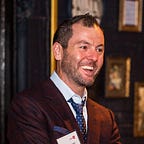Focus Groups: Making Lemonade From Design Research’s Lemon
The larger design community seems to hold a number of generally accepted truths when building digital products and services.
- Establish goals early to measure success
- Products should be tested early and often
- Personas are awesome
- Carousels are never awesome
- Monitor data to learn how your product is being used
- Personas suck
- Focus groups are the worst
Like many well-worn best practices, it can be easy to poke holes in a few of these, yet focus groups continue to keep getting kicked in the shins. And in many cases for good reason.
Let’s take a look at a few:
- Groupthink: one person may try to dominate the conversation and only offer one perspective that may not be shared by others
- Participants will likely hesitate to admit where or when they have difficulties in fear of looking foolish in front of strangers
- Other participants shouldn’t be put in a position to disclose proprietary or confidential information with other participants
- The script usually doesn’t allow for exploration or elaboration — the moderator is likely expected to get through the full script
- Many organizations using focus groups may think that a focus group replaces any additional or supporting research
- The food is probably awful
- If it’s anything like this:
https://www.youtube.com/watch?v=Sx1J3S6vUJ8
Those are all fantastic, legitimate reasons to avoid focus groups as part of your research strategy.
But what happens when focus groups or user groups are part of your larger research or product development strategy (even if it’s not your recommendation)? What then?
You make the most of the opportunity, that’s what.
The most important thing you can do as a designer who understands the importance of research is to get in the room. Attend the focus group, whether as a mole among the participants, on the other side of the glass, or sitting in the room as an introduced member of the product team there to help learn from the group.
Secondly, use the time to talk to the participants even if it’s over that awful lunch. Establish a relationship now so that in the future you can secure the one-on-one interview where you can really mine for more nuanced information.
In addition, you can use their questions or thoughts to shape the research strategies you have planned for the future or already underway. Even if the moderator doesn’t ask the participant to elaborate why she doesn’t use a CRM to log prospects doesn’t mean you can’t turn that into another theme to explore later.
Moreover, you can use the focus group as an opportunity to compare data from your field interviews or other research adventures. Are there interesting similarities or stark differences mentioned in focus groups that don’t appear in usability testing that warrants further investigation?
It’s also important to be a bit self-aware with your recommendations against focus groups. Is your organization comfortable enough with design research that you want to be the designer who suggests canning focus groups? Or can you turn this into yet another “yes, and” moment instead of “no, but” and learn — both you and the organization — from the experience.
In many ways, focus groups are similar to personas. Done wrong they can set your product development process down a doomed path before you’ve really even got started. But done right, they can be one more approach or tool among a number of strategies that can improve your chances of shipping a successful product people will actually use.
Chris will be discussing a number of ways to get executives and senior stakeholders to see the value of design research at Confab Central in May. There’s a pretty good chance focus groups will now be a part of that presentation.
